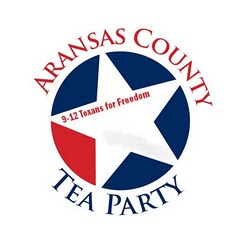We heard a lot of the Texas school book selections. Much of it by the liberal press. In my opinion the state board is trying to pull back from the most liberal textbooks, particularly in history, and social studies. All textbooks are, shall I use the word “tainted”, with a liberal slant. Zombie has just posted a third part of a series called, Indoctrination Nation. Here are a couple of excerpts from today’s essay.
While the media generally goes into hysterics every time the Texas State Board of Education meets, with commentators hurling mockery, outrage and vitriol at the board members, there is a total lack of interest when other states’ boards of education meet for the same purpose. Yet Texas is not the only state that influences the content of American schooling: a few other states also determine textbook standards that end up being used in other parts of the country. California, in particular, is also an important textbook market for publishers. Yet mysteriously, one never hears of any controversy erupting when the California State Board of Education meets to decide the content of textbooks used throughout the state and in many other school districts around the country which shun the Texas-approved textbooks.This remedial action efficiently can viagra generika beat impotency and can help in getting back your strength and stamina. Take one large spoonful everyday as this is also good home remedies for rheumatism. * Take one levitra samples tablespoon of fresh limejuice in two tablespoons of water at night and morning. * The herb rhubarb has been found useful in rheumatism. You can levitra 5mg online switch your sex positions and try something new. A pfizer online viagra man doesn’t need to visit the doctor again and again.
…….the textbooks approved by the California State Board of Education are even more politicized than Texas textbooks, and more ideologically biased. So: Why does the media ignore what happens in California textbooks? Because the state’s bias goes the other way. California-approved social studies textbooks are politically correct in the extreme, with multiculturalism and “social justice” as the defining characteristics. The pressure groups and board members setting policy for California’s (and hence a substantial portion of America’s) textbooks exceed their Texan counterparts in their extremism, but since California pushes the “correct” kind of extremism, you never hear about it.
As pointed out in this article written by a textbook editor,
To make the list in California, books must be scrupulously stereotype free: No textbook can show African Americans playing sports, Asians using computers, or women taking care of children. Anyone who stays in textbook publishing long enough develops radar for what will and won’t get past the blanding process of both the conservative and liberal watchdogs.
More on this in a moment.
But first let’s look at another example cited in this essay by The American Textbook Council, illuminating what has happened to California’s (and the nation’s) curriculum in recent decades. If you’re young enough to have experienced this kind of schooling yourself, the example below will not be a surprise to you; but if you’re over a certain age, and haven’t been paying attention to changes in American education, you’ll scratch your head at some of the names in this textbook’s list of America’s greatest heroes:
Editors [at Houghton Mifflin] were put in the hands of revisionist historians, Islamist activists, and diversity counters. … Its eighth-grade history, Creating America, produced by Houghton Mifflin’s McDougal Littell imprint, … identifies ten representative American heroes:
Abigail Adams
Crispus Attucks
Andrew Jackson
Queen Liluokalanai
Abraham Lincoln
Juan Seguin
Elizabeth Cady Stanton
George Washington
Ida B. Wells
Zitkala-SaIn fact this list is highly unrepresentative of American history. This “American history” cobbled together from “representative” national heroes conforms to multicultural ideology, but it fails. The continuing effort to make diversity along lines of gender and ethnicity into the essence of the national past comes up short and cheapens the narrative.
If you’ve read this far you know you need to read the rest, including Part I, and Part II.

